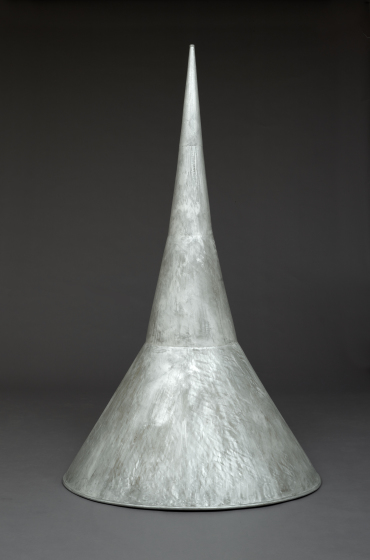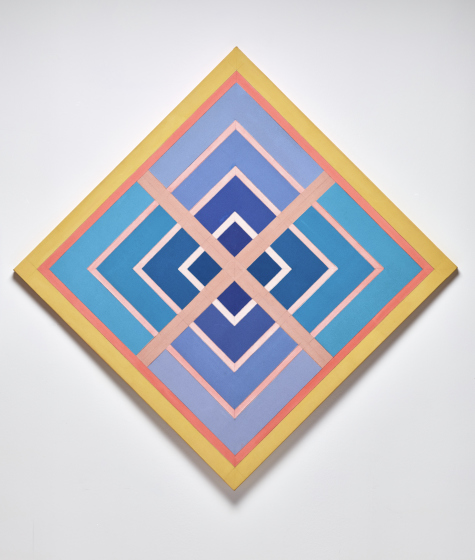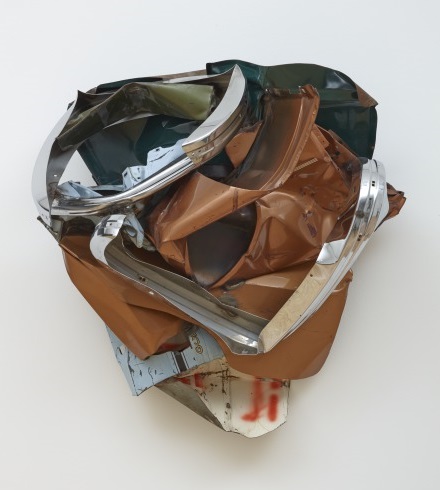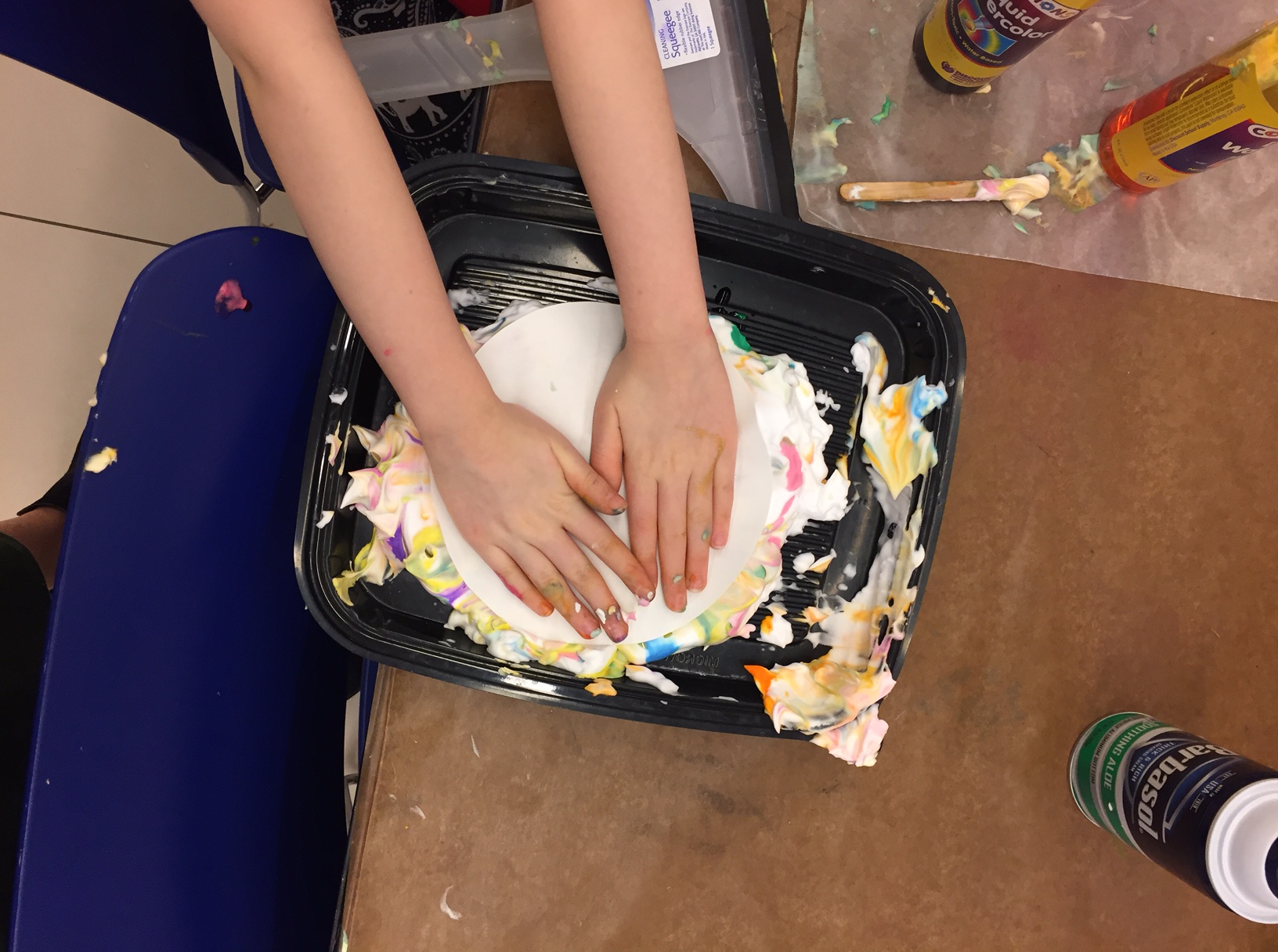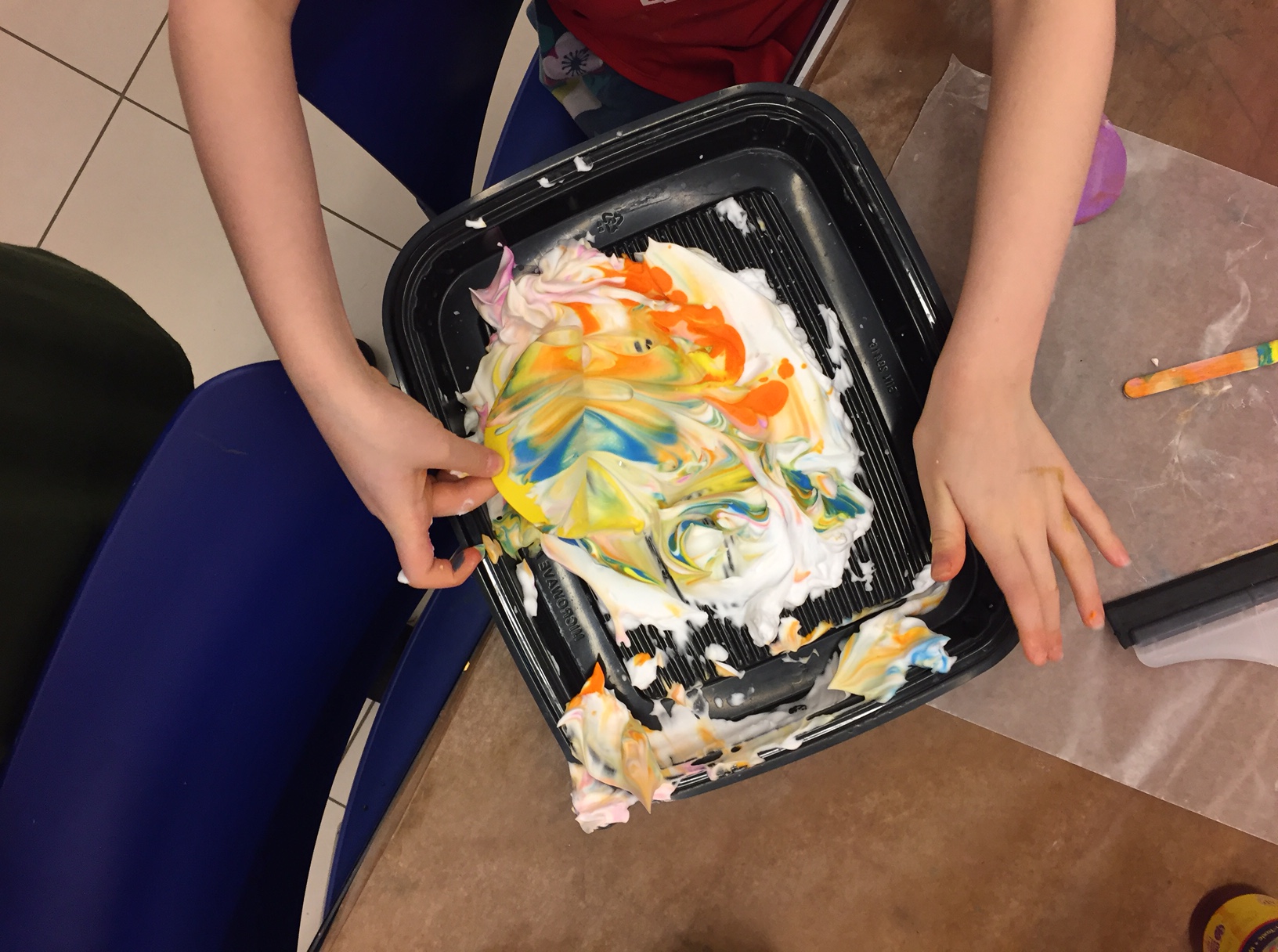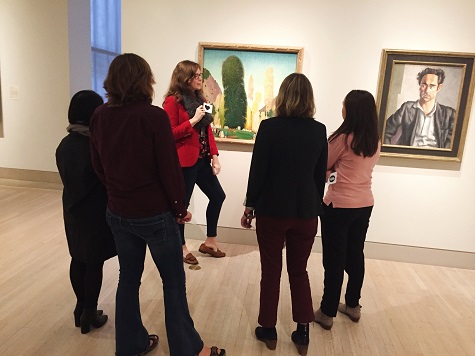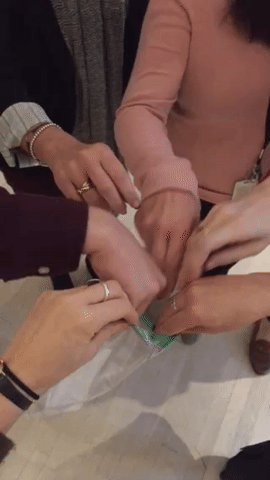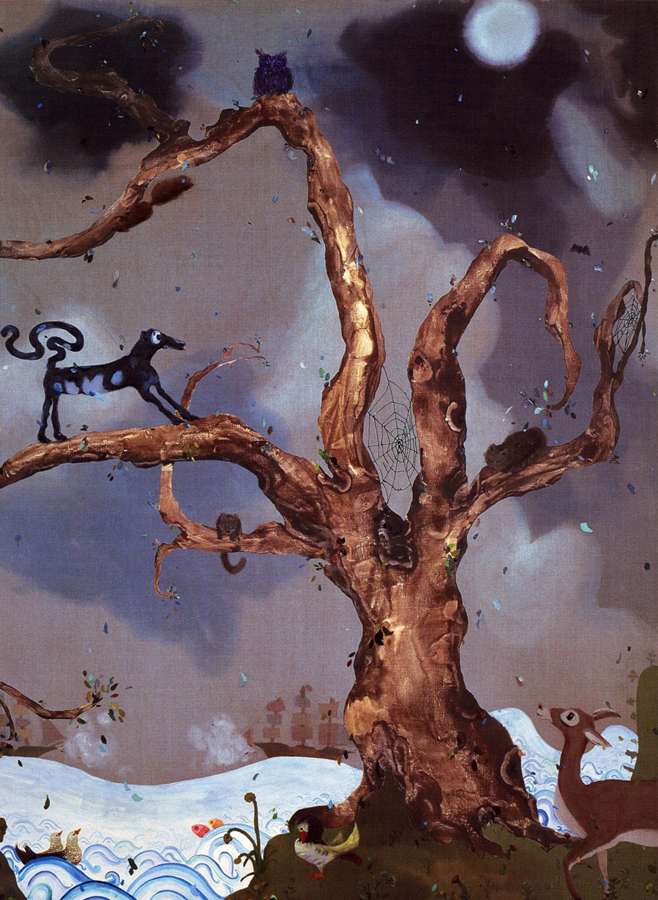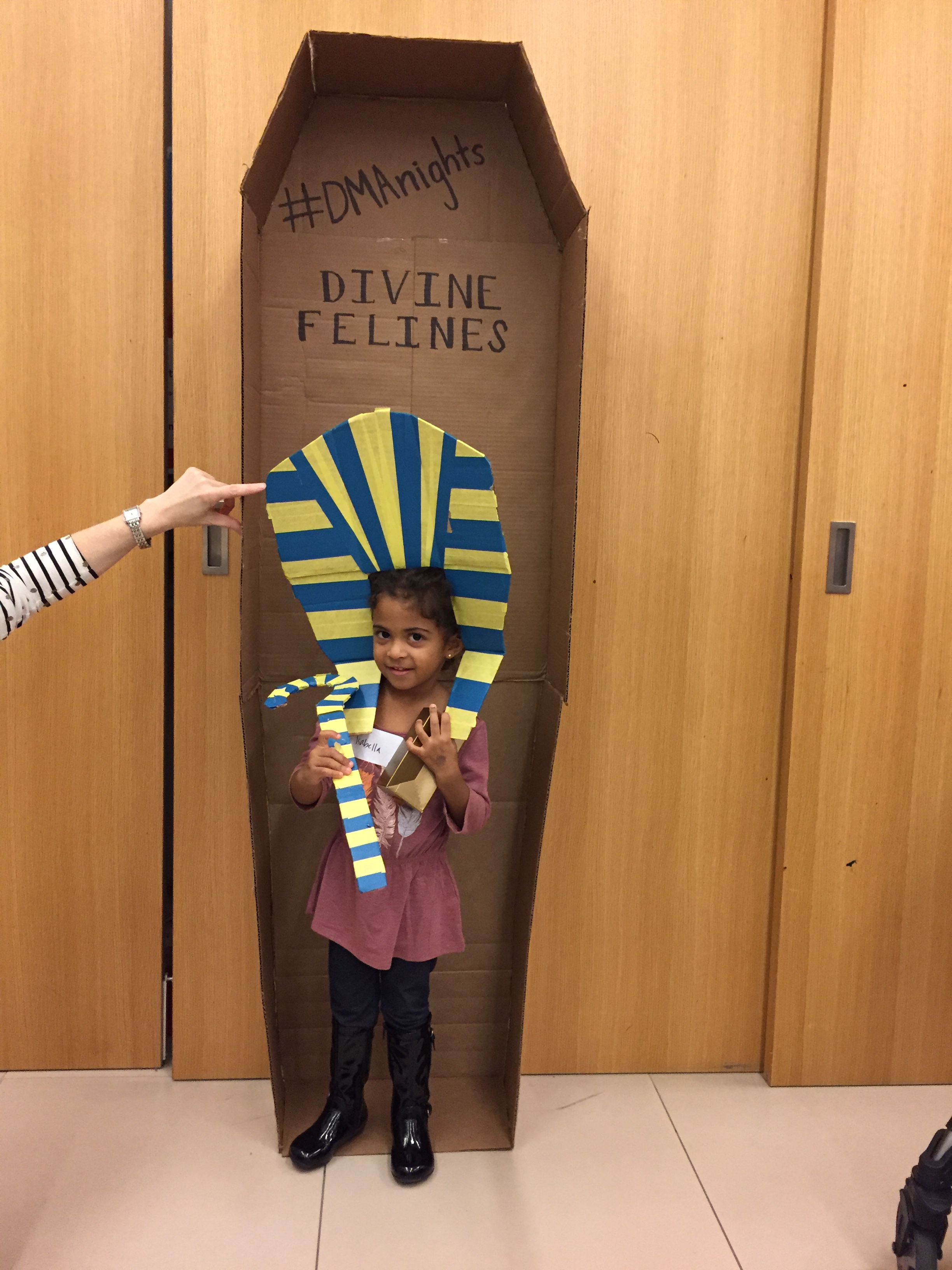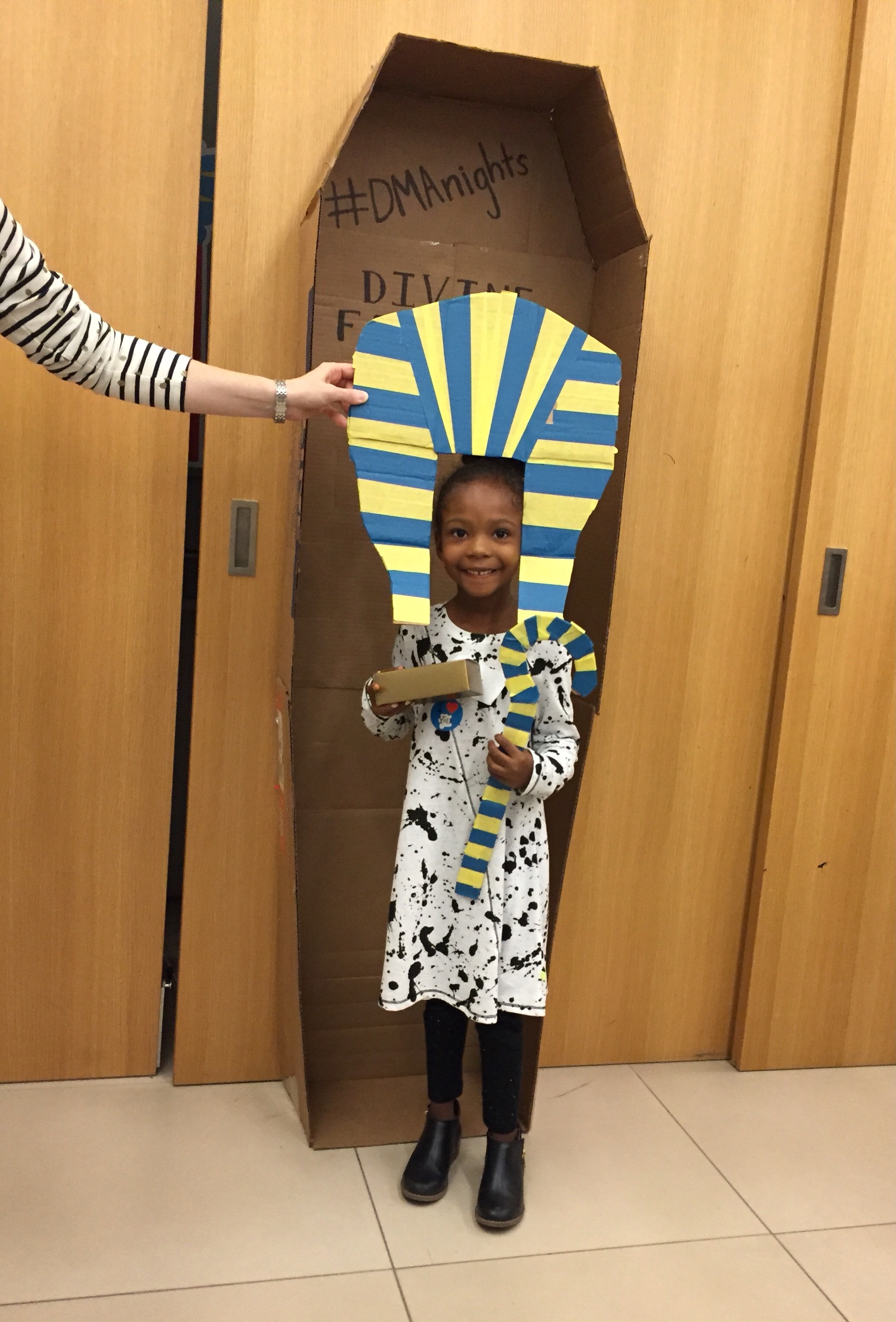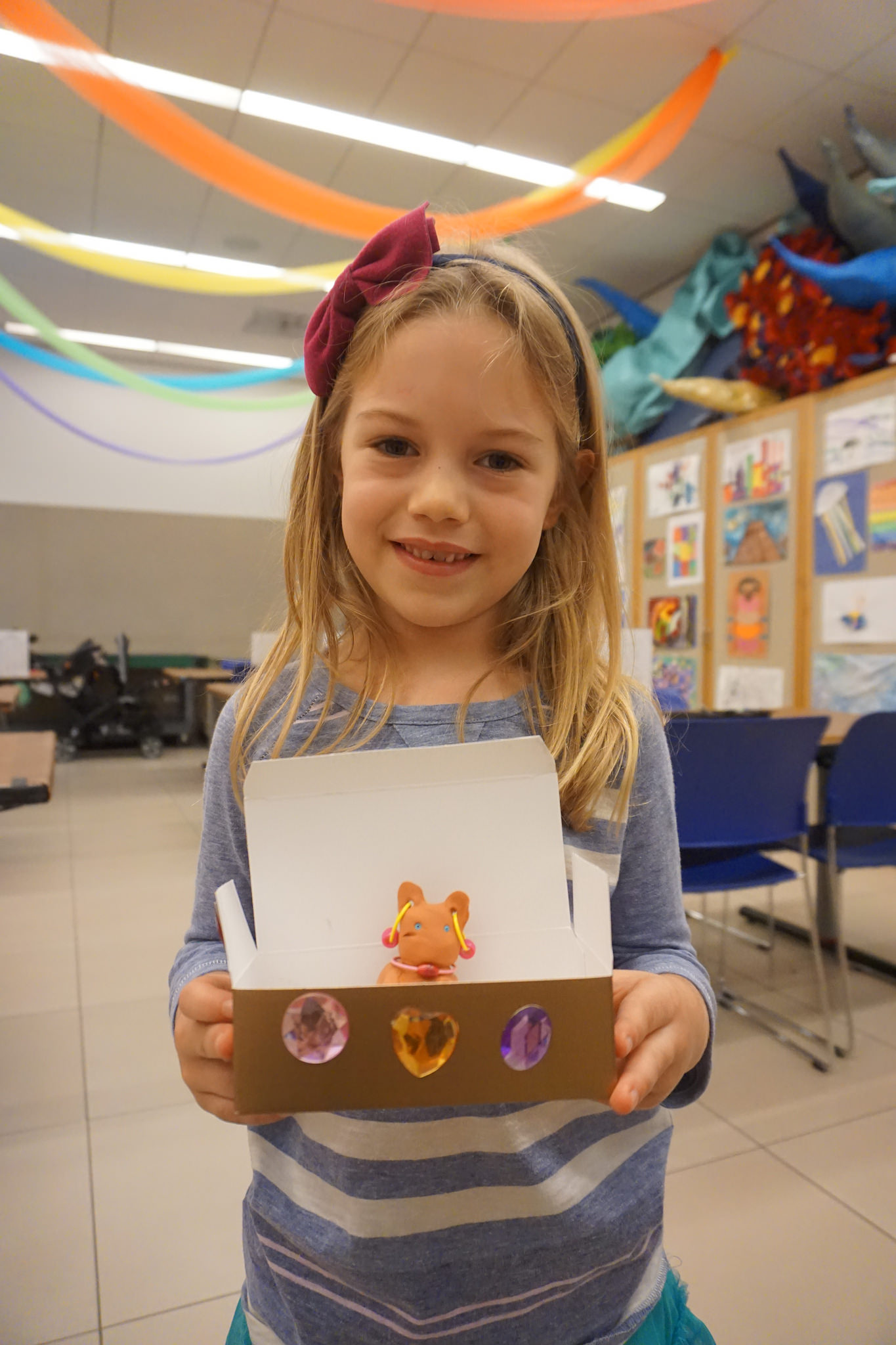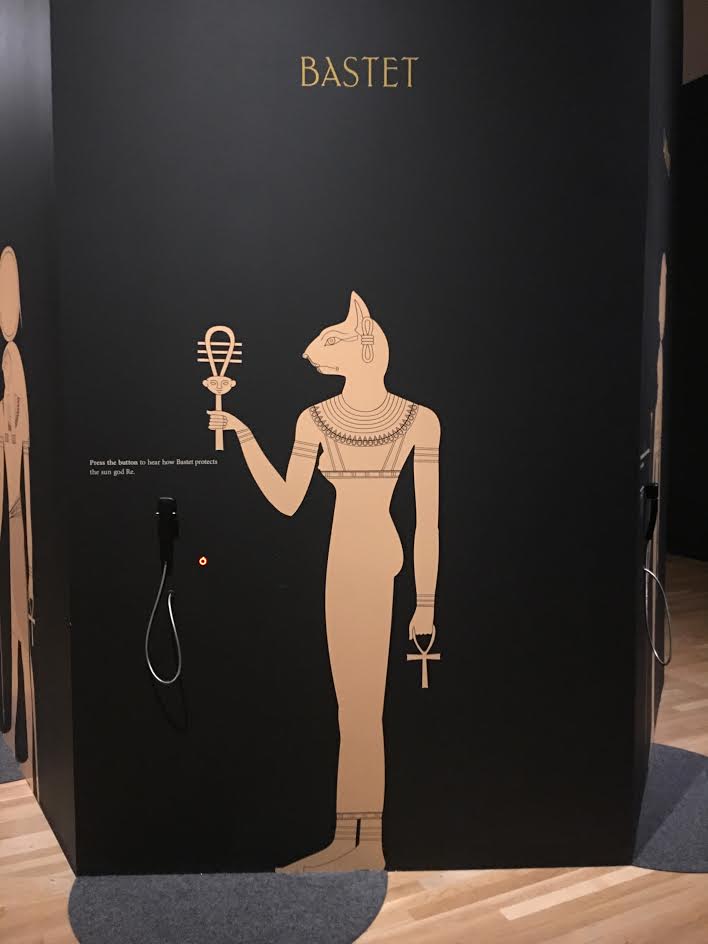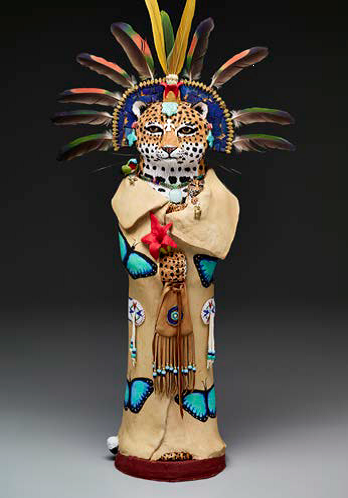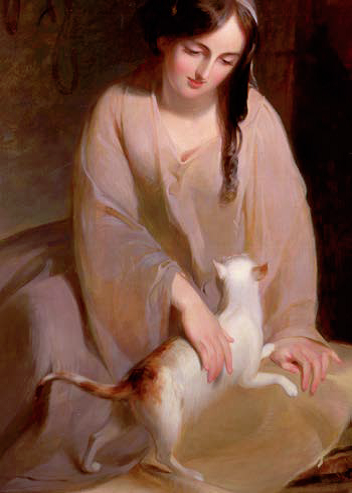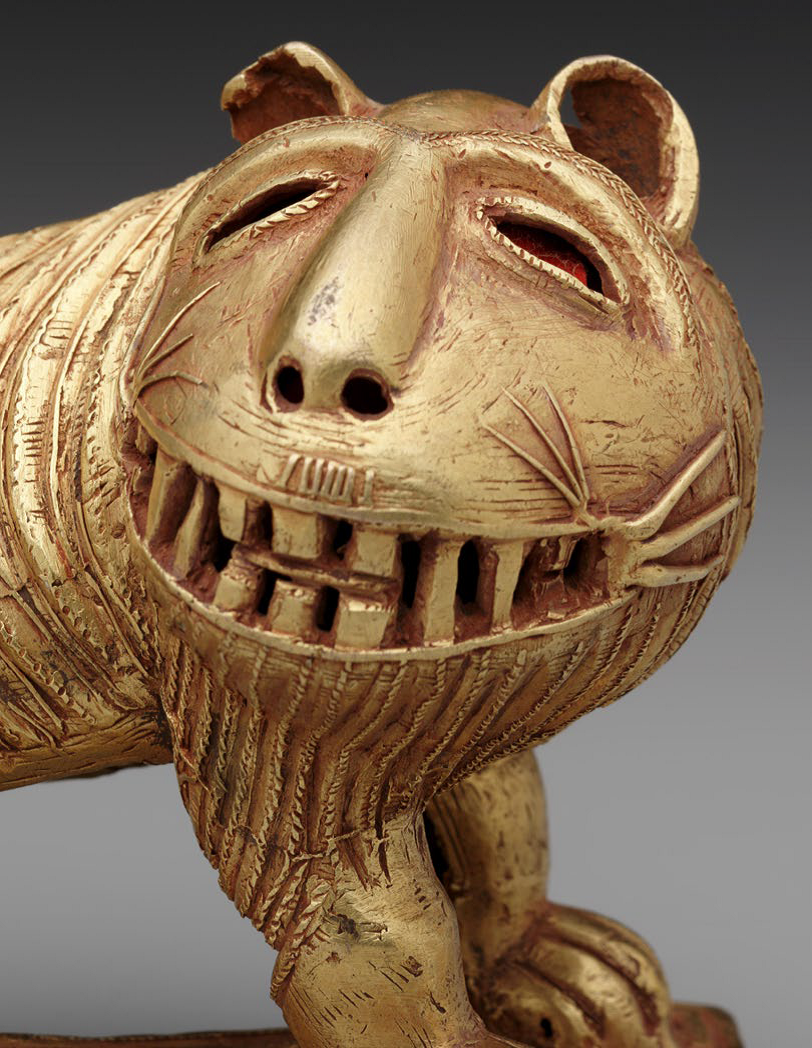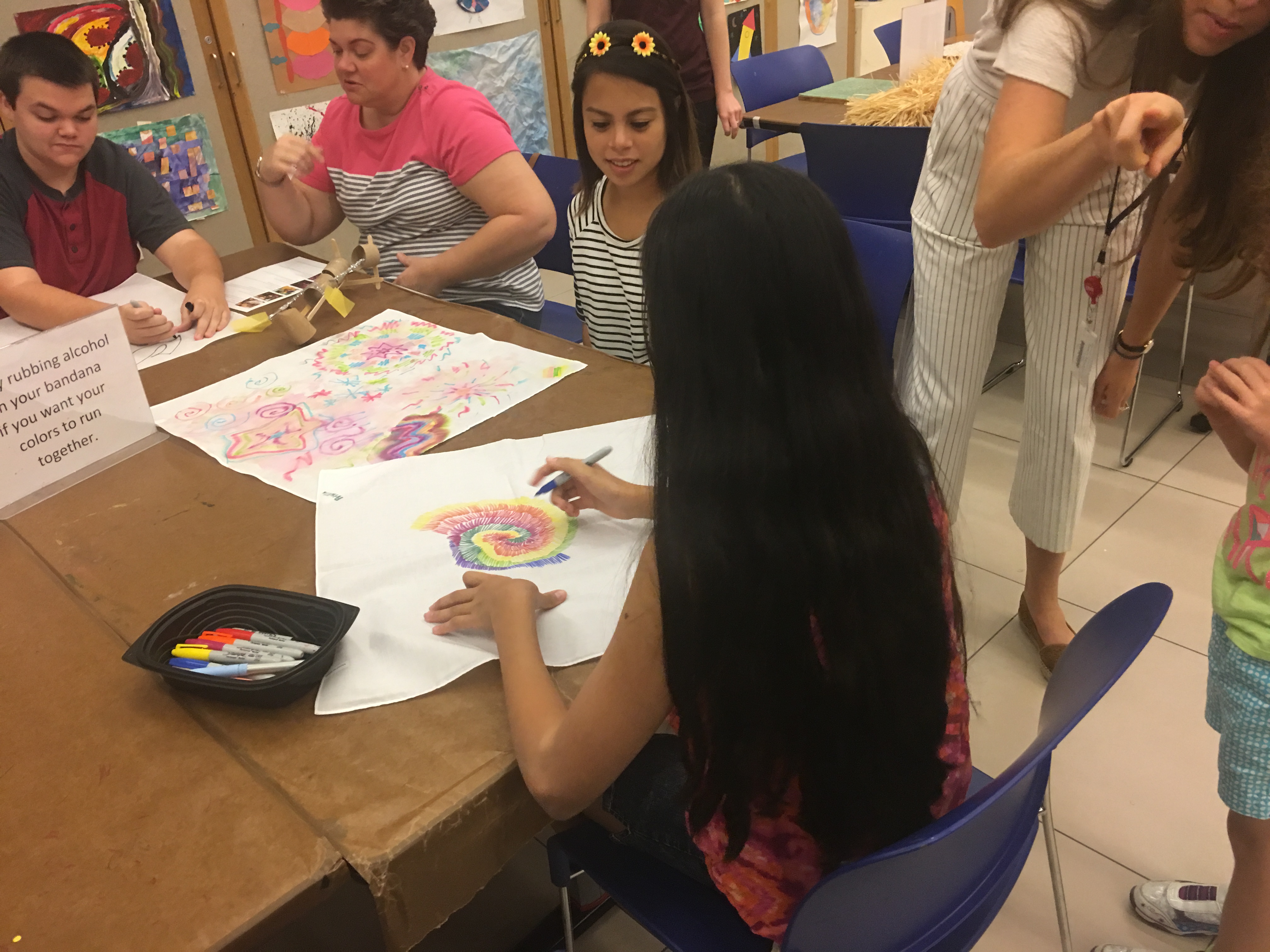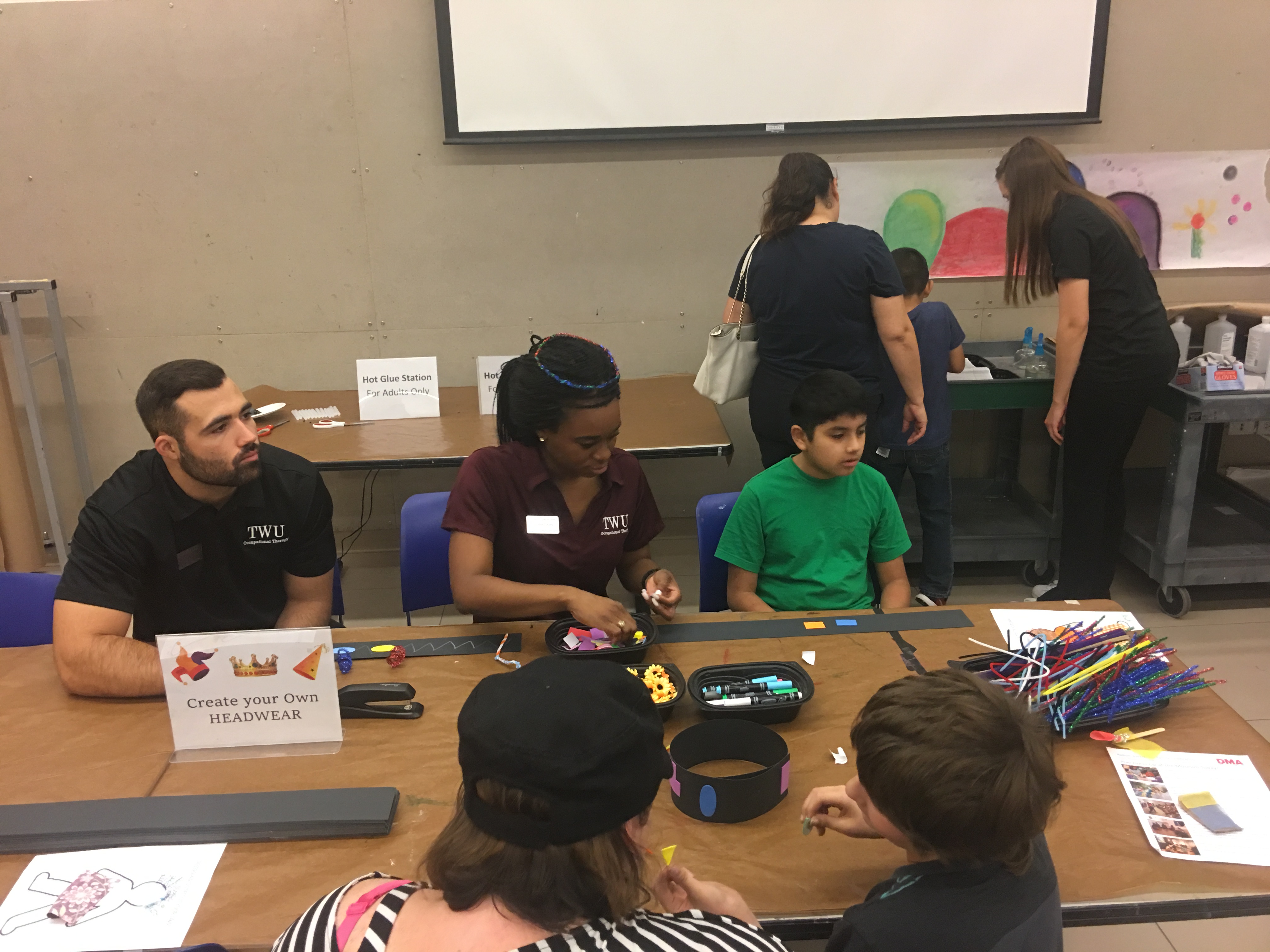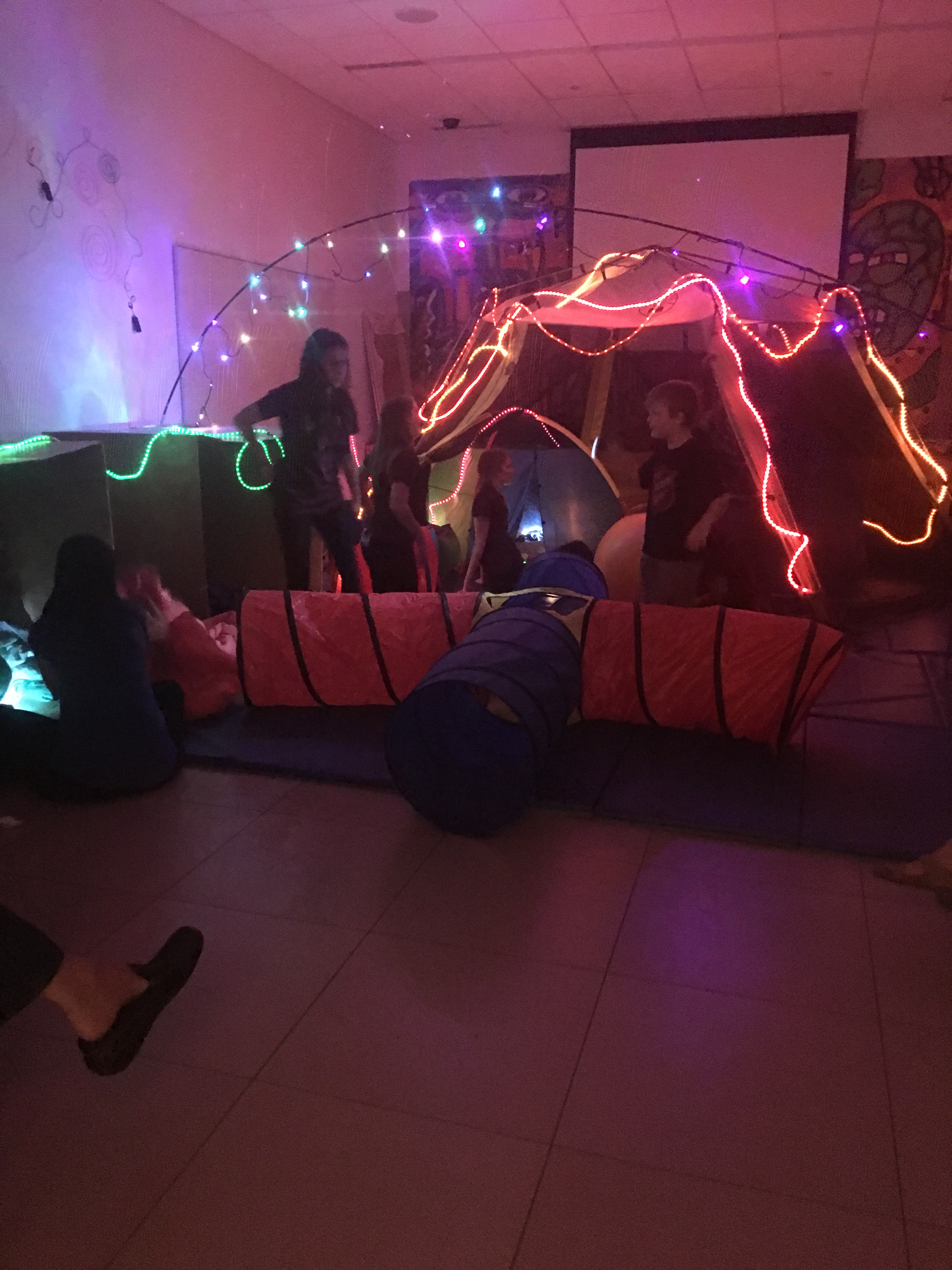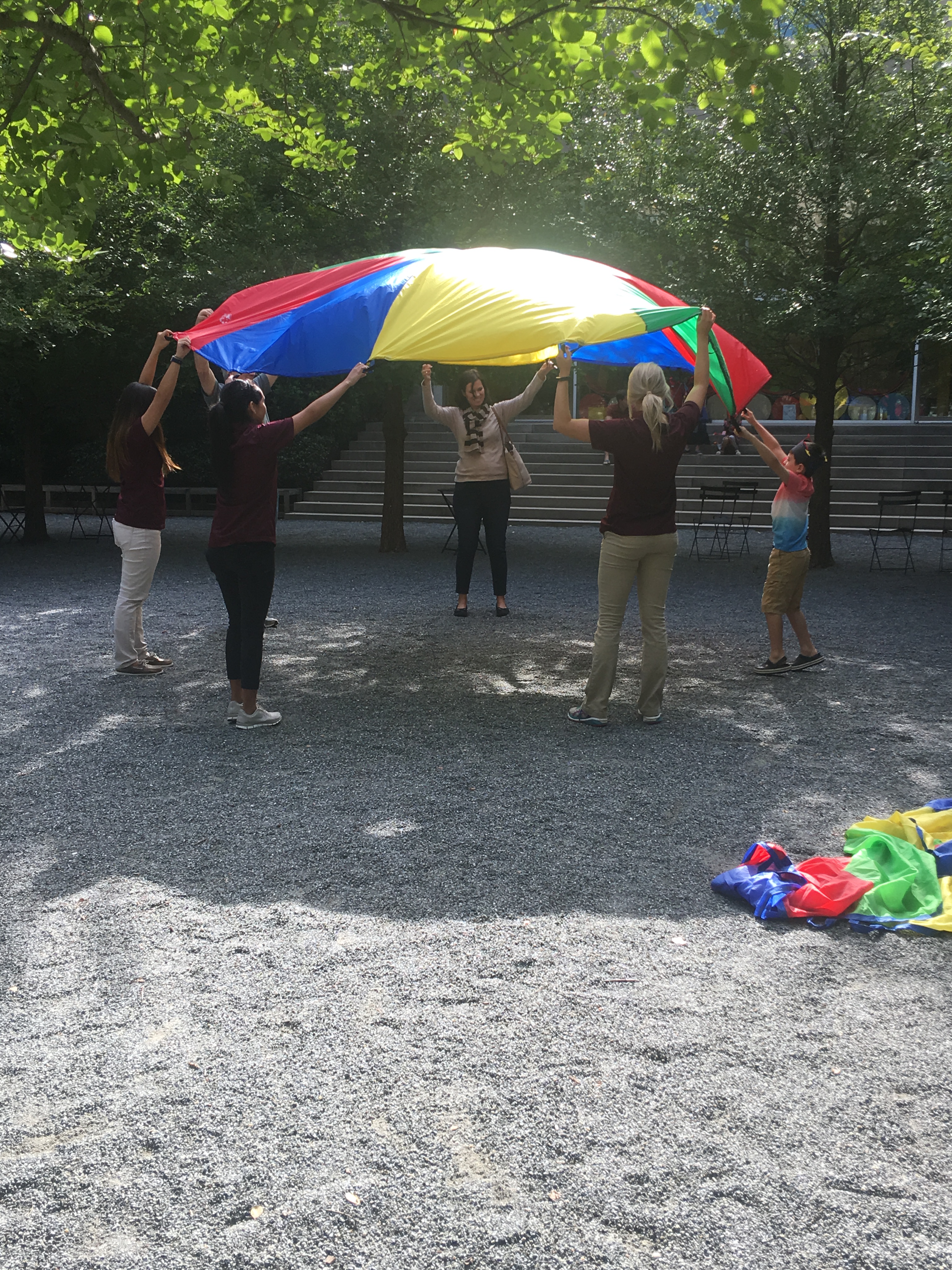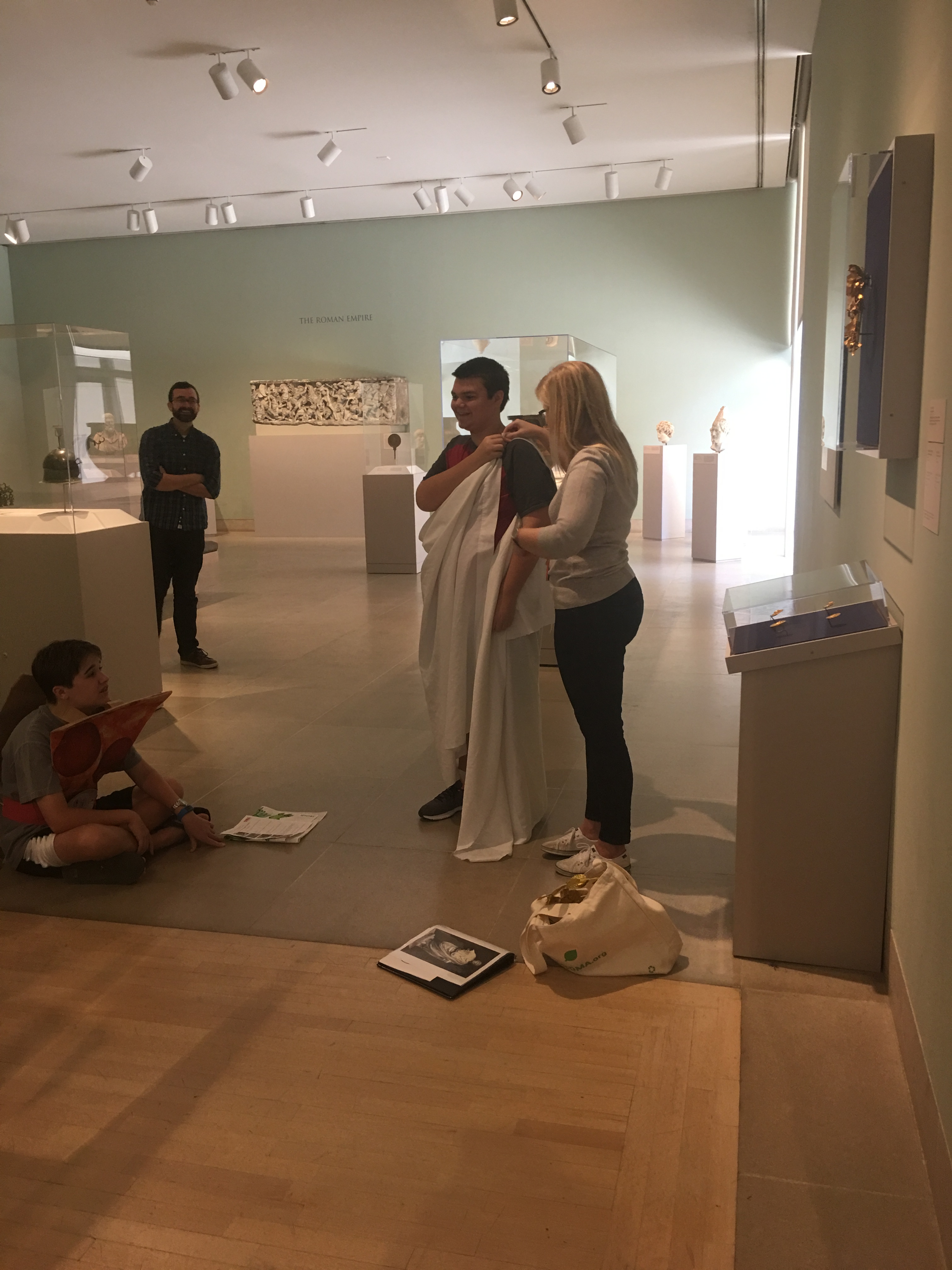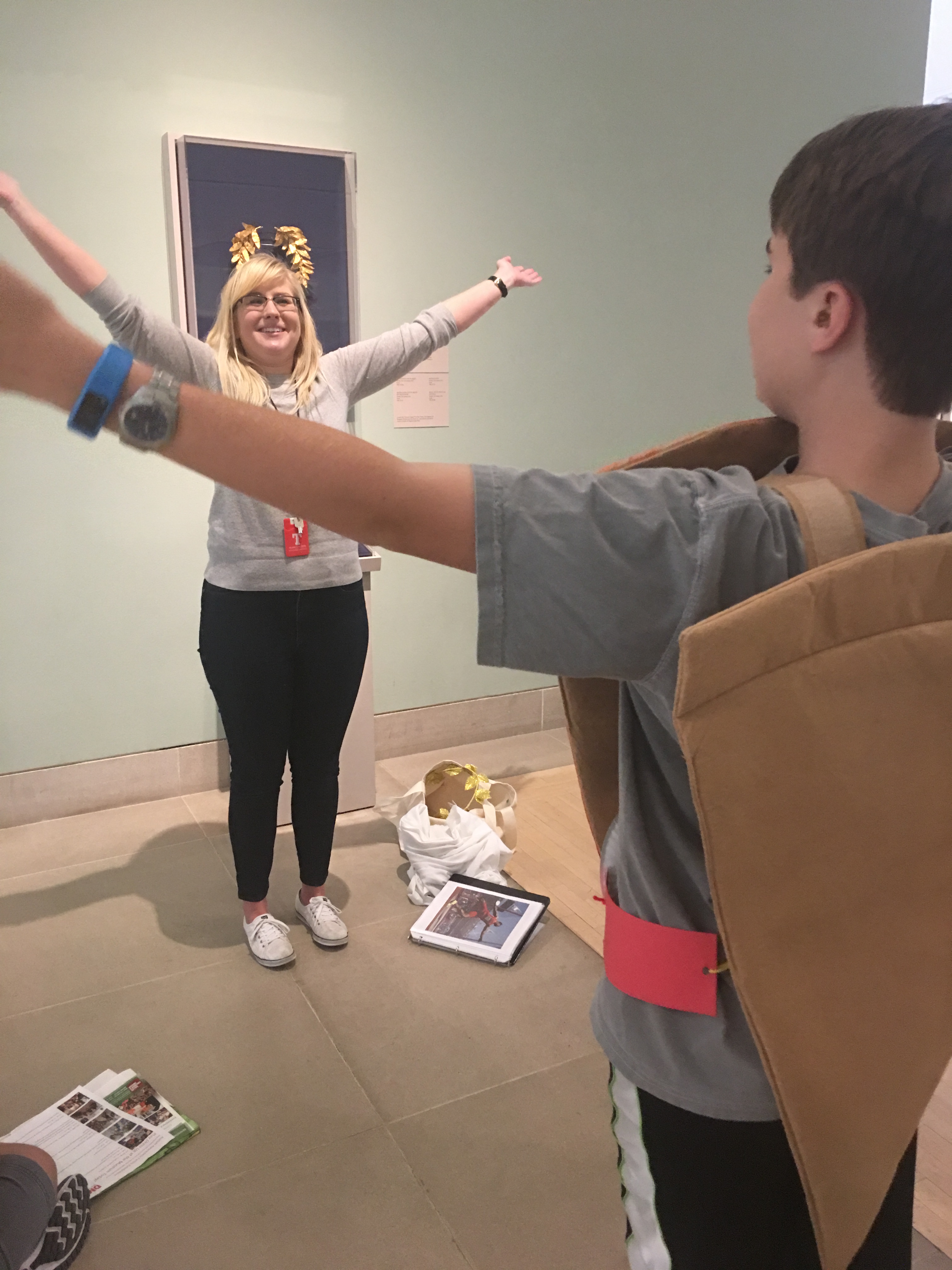Throughout January, our preschool visitors went on an imaginary space journey through the contemporary galleries where they learned about outer space and the roles of astronauts. We pretended Martin Puryear’s Noblesse O. was our rocket ship as we blasted off to look for new planets in the Museum. Some of the planets we discovered were John Chamberlain’s Dancing Duke and Alejandro Puente’s Untitled. The kids were asked which planet they would live on, and what else they would find there. Lots of young explorers said Dancing Duke would be full of robots and skyscrapers, while Untitled would be very cold and icy!
- Martin Puryear, Noblesse O., 1987, Dallas Museum of Art, General Acquisitions Fund and a gift of The 500, Inc., © 1987 Martin Puryear
- Alejandro Puente, Untitled, 1968, Dallas Museum of Art, Lay Family Acquisition Fund and gift of Mr. and Mrs. Andrés von Buch
- John Chamberlain, Dancing Duke, 1974, Dallas Museum of Art, gift of Dr. and Mrs. Harold J. Joseph in honor of Mr. and Mrs. Max Walen, © John Chamberlain / Artists Rights Society (ARS), New York

After our gallery adventure, the kids went to the art studio to make some outer space art to take home. For Arturo’s Art and Me classes, the young space explorers made galaxy paintings. The studio was split into two stations: the first was a splatter paint station to fill up their night sky canvas with colorful stars, and the second, a shaving creme station where they made planets for their galaxy.
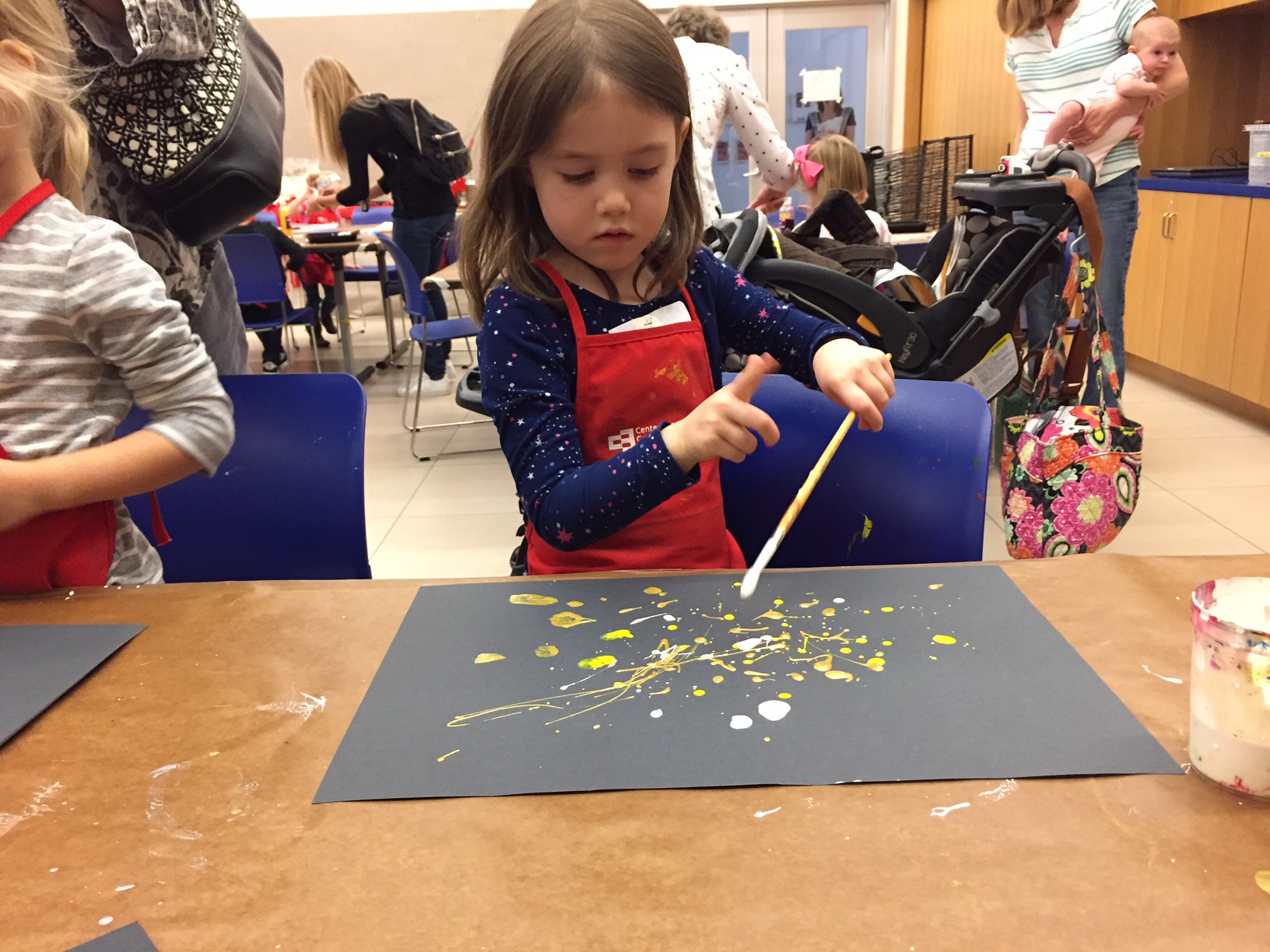
The young artists gently dipped, dabbed, and dripped onto their backgrounds.
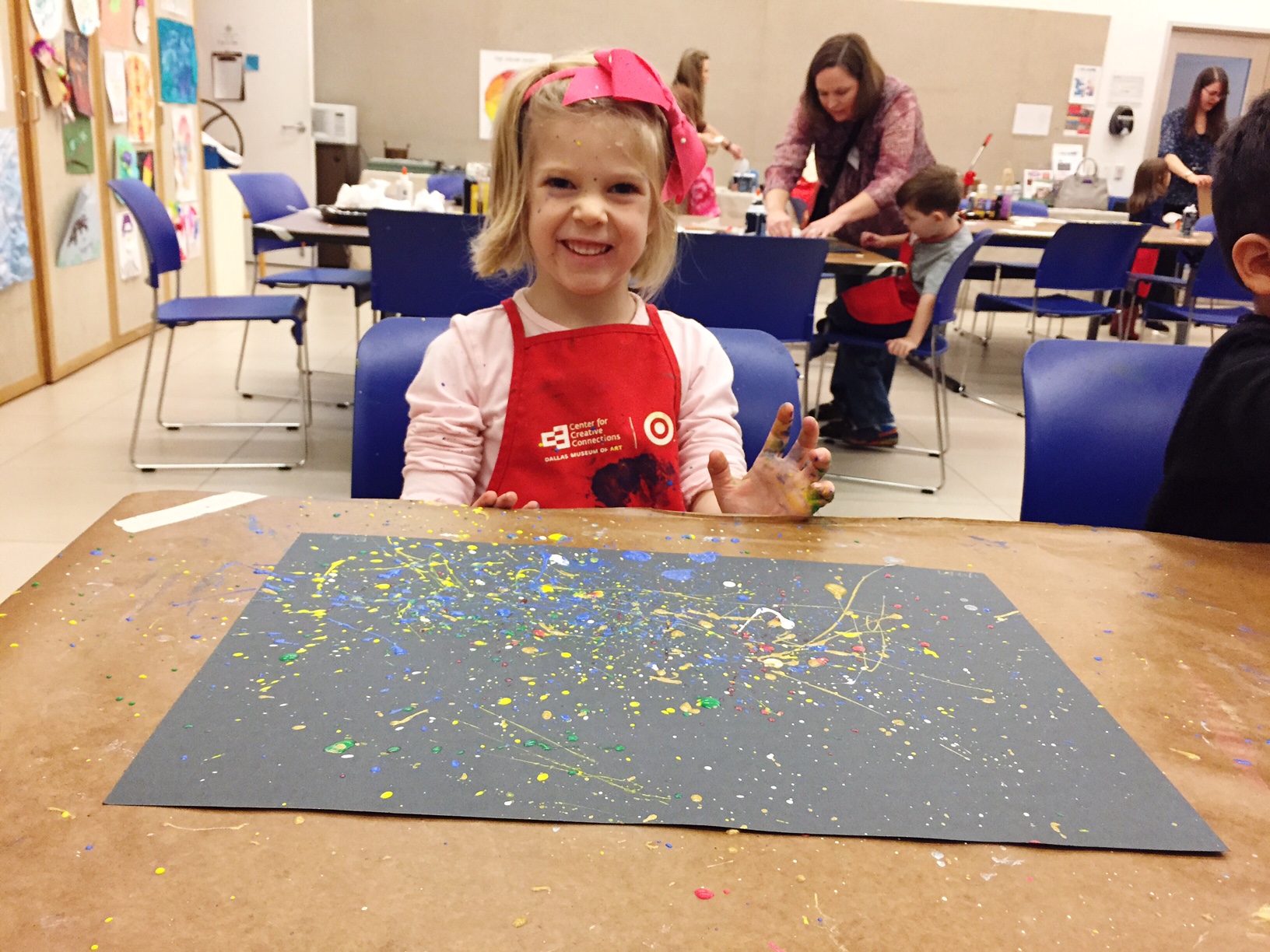
(Some not so gently…Our friend here doesn’t seem too upset about the paint on her face and hair bow though!)
Once their backgrounds were completed, it was on to the shaving creme station. Here, kids dripped vibrant liquid watercolor into trays of shaving creme, then swirled it together to create a beautiful planet pattern. Next, they pressed pre-cut circles into the shaving creme, then squeegeed off the excess creme to reveal a beautiful intergalactic swirl left below!
Next, the young artists glued their planets onto their backgrounds, and viola! A whole new out of this world galaxy painting. Their work speaks for itself, I think!
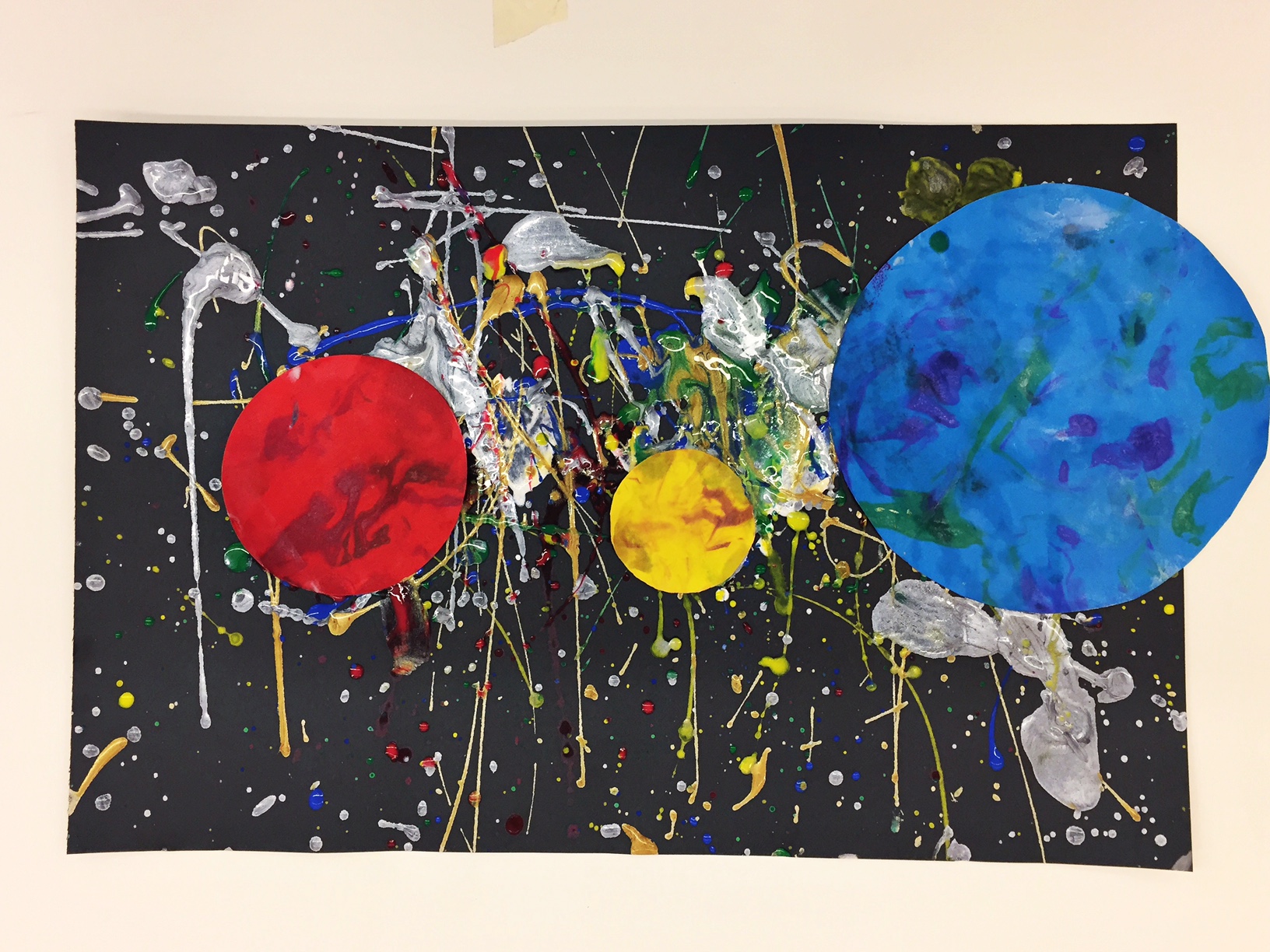
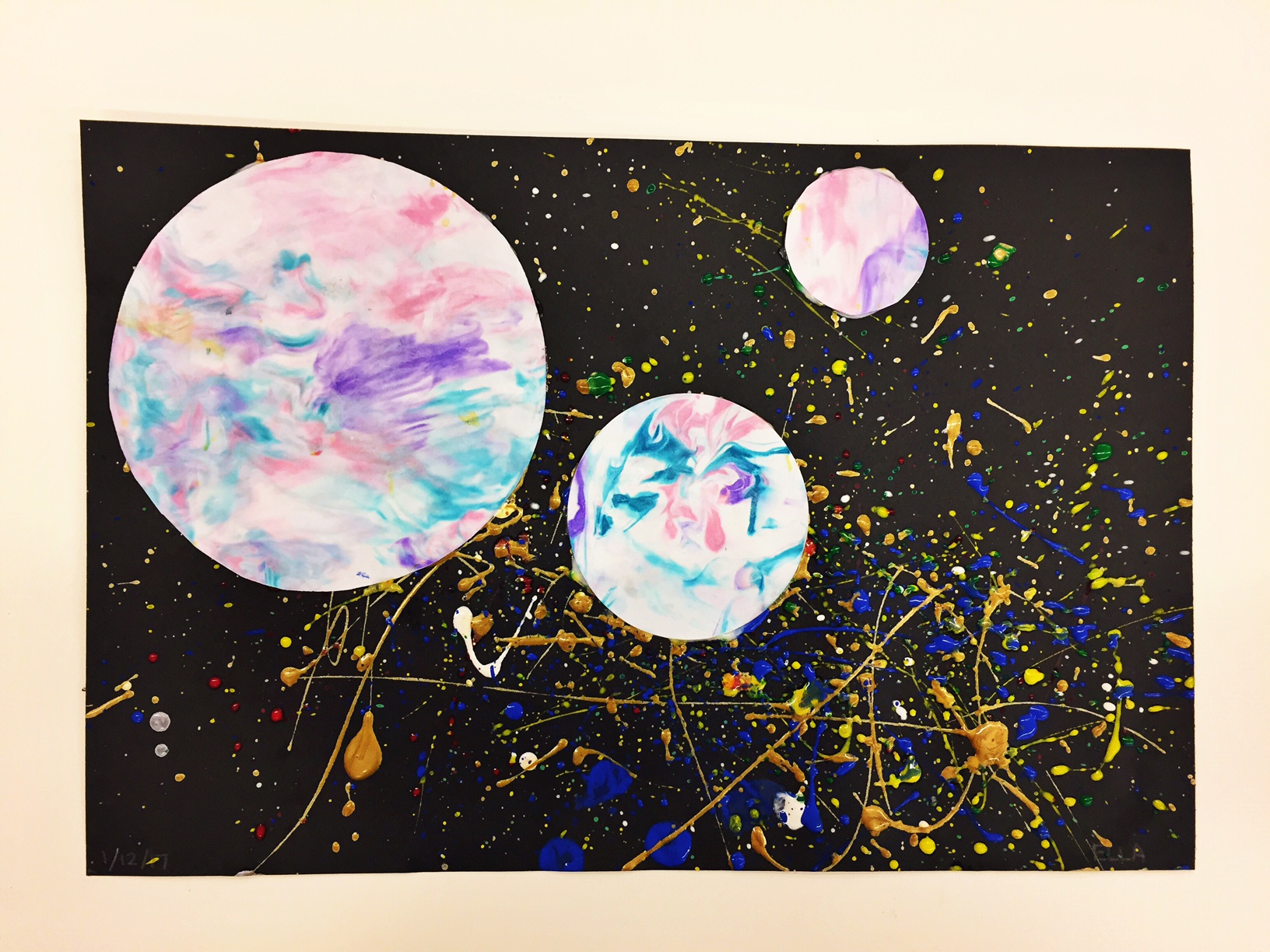
This activity is super easy to do at home! If you don’t have liquid watercolor to add to the shaving creme, food coloring works great too! If you need some more instructions on the shaving creme prints, check out Jennifer’s great blog post on the topic, and if you are interested in attending Arturo’s Art and Me or any of the other great classes at the DMA, click here!
Grace Diepenbrock
McDermott Intern for Family and Access Teaching
